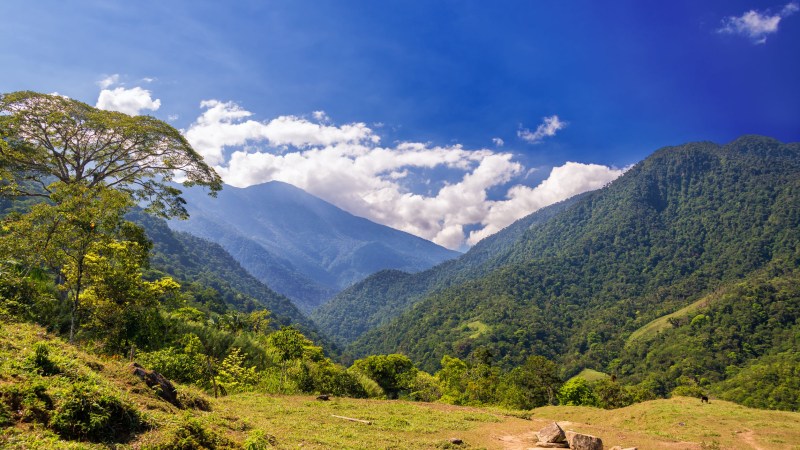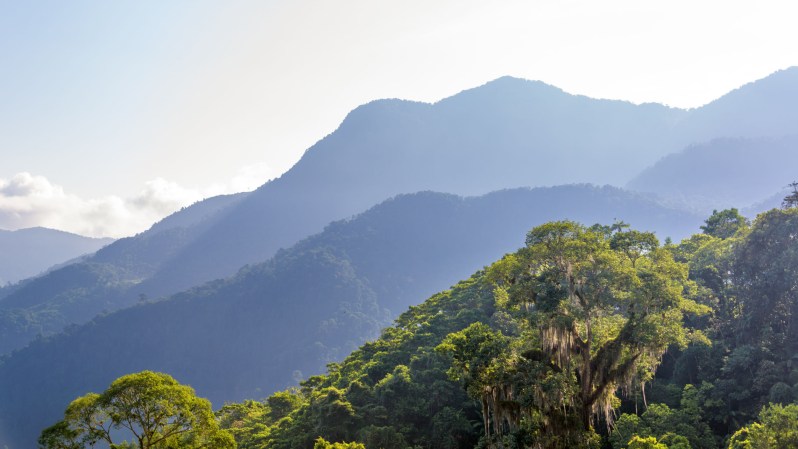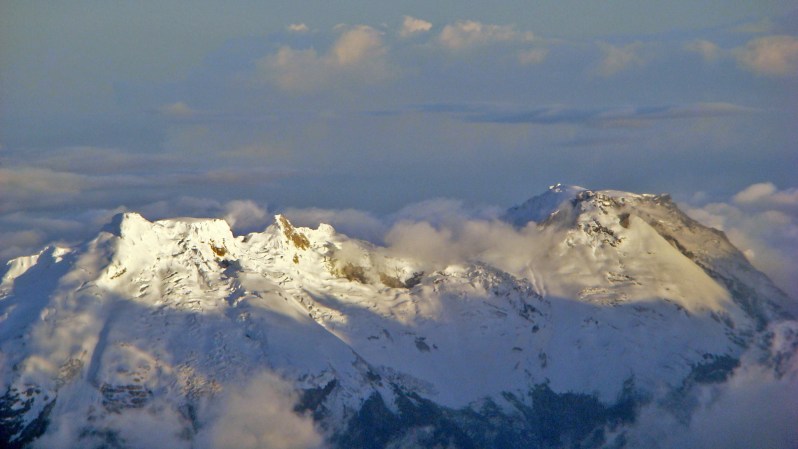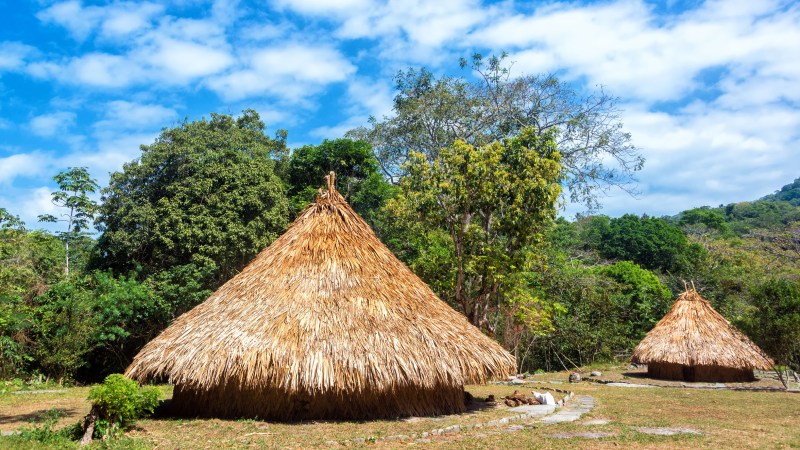
By the time you read these words, I will be thousands of miles from my home — away from family, friends, and anything familiar — and ready to, quite literally, hike up into an unknown world. At least one largely unknown to anyone not born into the indigenous Kogi tribe, a society that is almost culturally the same as in its pre-European contact form. And certainly all but unknown to me, for I have only had one week to research the places and people I’ll encounter in Colombia’s Sierra Nevada de Santa Marta Mountains. How comes it that I’m heading so far afield on such short notice? Well, the best laid plans, as they say…

Here’s a bit of backstory for you:
Last autumn, my wife and I had the opportunity to spend a weekend “glamping” at Ithaca’s Firelight Camps during a weekend sponsored by Columbia Sportswear. It was a great experience, blending just the right amount of outdoorsy-ness and luxury. (Hike and kayak all day, steakhouse dinner and fireside cocktails by night. Not a bad way to live.) I got to know a few of the folks from Columbia rather well that weekend, and they got the chance to see a bit of my writing over the subsequent months. I guess we all liked each other, because a few weeks back I was contacted by Columbia’s PR team with an offer I gladly accepted. (Well, first I mulled it over, then I talked it over, then I realized that this was one of those occasions when you don’t say “Thanks, but no thanks.” It was an occasion when you only say yes.)
The plan was this: a team made up of two spokespeople from Columbia Sportswear, a few Colombian mountaineers, a film and video crew, and a yours truly were headed up Nevado del Huila, a semi-dormant volcano that happens to be the second highest peak in Colombia, standing more than 17,590 feet in elevation. If we made the summit, the non-Colombian contingent of the team would have represented the first foreigners to have ascended the lofty zenith in more than six decades.
Alas, the plans to climb Nevado del Huila were scuttled by two factors: landslides and landmines. The former happened recently, the latter were left over many years of civil strife. Discretion being the better part of valor, the trek was delayed indefinitely.

But we still had a team assembled, gear checklists fulfilled, travel plans and logistics in place. So what to do? Simple: head for other mountains.
So instead of Huila, I shall be trekking up the Sierra Nevada de Santa Marta mountains, which are the highest coastal range in the world. Multiple 18,000-plus foot summits loom less than three dozen miles from the Caribbean coast of Colombia, and the journey up into the mountains sees the hiker encounter almost every climate zone on earth. We’ll start near sandy beaches, go through largely virgin jungle, hike across rainy, windswept moors, and enter barren, rocky, and finally snow-covered peaks.
Unlike the plans for the remote trek up Nevado del Huila, the team won’t be alone, though; not exactly. In fact, for as long as we are in the middle and upper elevations of the Santa Martas, we will be the guests of the indigenous Kogi people. This society can trace its heritage back well over 1,000 years and has lived in its current villages, practicing much the same way of life, since the late 15th Century, when European invaders forced them to flee up into the hills and mountains. In the high country, they were left alone and apart from the rest of the world, and that’s just how they prefer it.
The Kogi are far from an uncontacted tribe such as you will occasionally hear about in the depths of the Brazilian Amazon. The Kogi know much about the outside world, and they disapprove. They know that logging, mining, and shipping are damaging the waterways; they know that wanton development of the tourism industry destroys beaches; they know that careless farming ruins forests. And they know the glaciers on their towering mountains are growing smaller every year.

The Kogi have long (as in centuries) considered themselves the stewards of the earth and they devote their lives to mindful care of nature, existing in harmony with what they see as a living earth. But in the few instances during which these people have granted outsiders full exposure to their sacred homeland — there was a BBC documentary in the 1990s and another film made a few years ago, along with just a handful of other interviews granted and short films produced — they do not demand we of the outside world change all of our ways and adopt their form of living, they merely ask that we try to limit our impact on the shared planet. They ask that we go through life trying our best to care for this place; that we give a damn, in other words.

The actual trek will last seven or eight days, and we will likely make it to about 15,500 feet of elevation. There is a chance we’ll go higher, but the Kogi consider the snowfields at the top of the Santa Marta mountains sacred, and may prohibit my team from setting foot there. The journey begins in sweltering heat with some trail blazing (machetes, yes) and soon leads into a cloud forest where it is perpetually raining. Then we enter foothills. Then the upper reaches.
I wish I could share more details, but I can’t; I simply have not had enough time to do more than assemble my gear, load my pack, and keep up with the training runs. This truly is a journey into the unknown for me; I’ll tell you all about it when I get back. (After showering. And maybe taking a nap. And spending time with my wife and son. Then I’ll tell you.)


